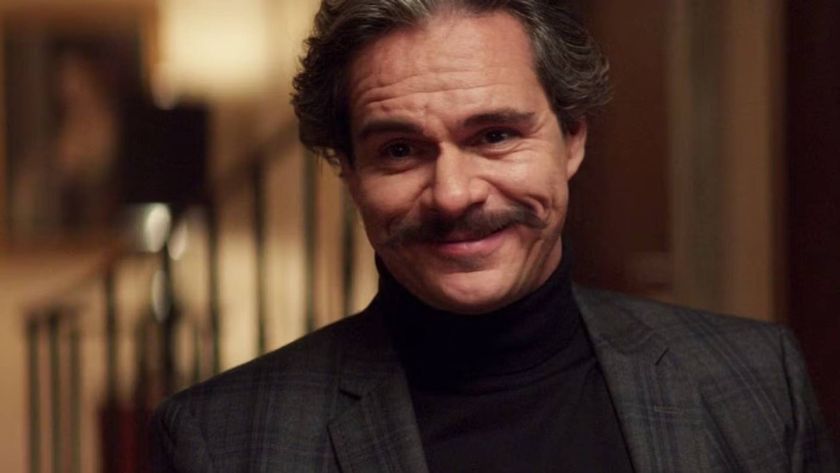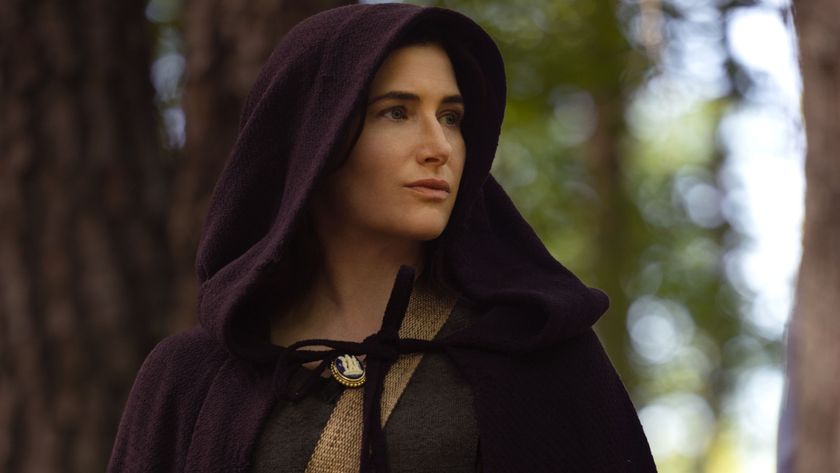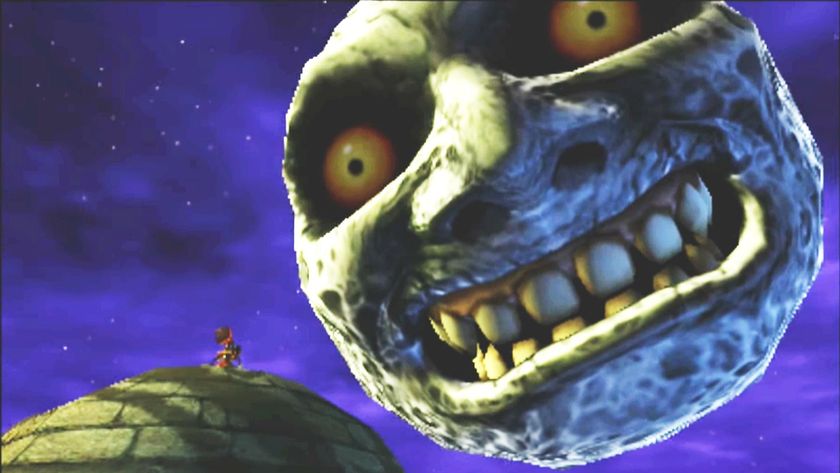Interview Minority Reports Alex McDowell
None
Top Production Designer Alex McDowell talks 3D, Watchmen and building the future in Minority Report
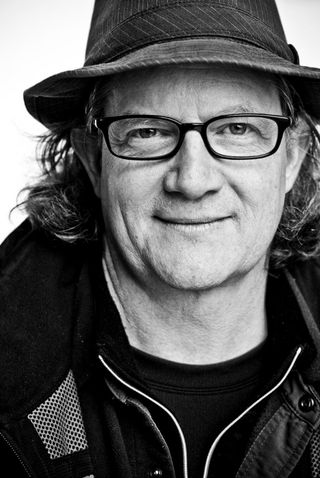
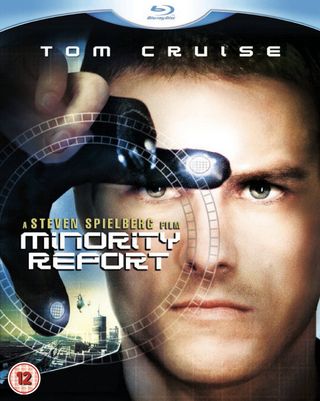
It’s been almost eight years since Steven Spielberg’s somewhat underrated sci-fi actioner, Minority Report, was released in 2002 and today sees the film’s release in crystal clear HD on Blu-ray. In the absence of holo-vids of course. To celebrate we sat down for a chat with Production Designer Alex McDowell, the man primarily responsible for crafting the film’s increasingly prescient vision of the future, as well as having worked on the likes of The Crow, Fight Club and Watchmen. Give it a read and when you’re done why not enter our competition where you can win one of three copies of Minority Report on Blu-ray.
.
SFX: We’ve seen the future dozens if not hundreds of future worlds in various films and TV shows over the years so how did you go about crafting a fresh vision of the future in Minority Report?
Alex McDowell: It came from a very early brief from Steven Spielberg, when we started we had the short story, no script and just really a verbal discussion and description from Steven about an apparently utopian future that turned out to have a dystopian centre to it. His real driving instruction was that it was future reality, not science fiction, and for me as a designer I’m really interested in building an interior logic to any world that I design, so to have that brief such a long way pre-script (in the end it turned out we had a year of work before the script was really in place) gave us an opportunity to build the logic of a world that was based on certain premises based in the story. Like the pre-cogs, the fact that pre-cognition was out there and it allowed this murder free society to exist, what were the real implications of that, the social-political implications, the technological implications of being 50 years in the future. And I think the world got its opportunity to develop into something coherent and believable because we had time to investigate how you would play out all these different rules. We also got to sit with a lot of very smart people in a room and listen to their view of what they thought would happen as a logical progression, what was going to happen even in the next five years. A lot of what we were hearing 50 years out was so fantastical that Steven didn’t even want to use it, he kept a lot of the things we looked at that were five or ten years out, you know some of the touch-screen technologies projected in the film weren’t in existence when we did them in the film, but they’re now actually in use, and that’s because we were talking to the right people, the people who were already developing those technologies.
SFX: You mentioned that the design work started before the script was even written so were there any occasions where the story was born out of design?
AM: In the end there were certain sequences you could identify as being very much deriving from the design, for instance the vertical car chase came about because we imagined the city, Washington DC, as zoned so you have to build high. We imagined a city that went vertical because of a massive population influx because it was a murder free society created through the Precogs. And because of that there was a transportation issue, how do you get around this very, very vertical city? So we came up with a vehicle that could travel vertically and horizontally and works as a sort of elevator meets taxi cab and in the process the progression of design created a setting for a way of telling the story that didn’t exist in any script, so when Steven saw it and [screenwriter] Scott Frank saw it they wrote to it. I think that happened a few times in Minority Report because we did have this simultaneous development of story through visual and through writing at the same time.
Sign up to the SFX Newsletter
Get sneak previews, exclusive competitions and details of special events each month!
SFX: Is it rare that this happens?
AM: I think it is still relatively rare, there is still what I would consider an old model in Hollywood that says a script needs to be in place before you start a film, but increasingly design is moving into development. When you have this it means the design and the script tend to work more hand in hand and that’s the opportunity where you can develop a setting for story that I promote heavily as a designer because film is a visual medium, they’re not called “wordies”, the movies are really about embedding narrative in environment, setting a frame in which story can take place and Minority Report was a good proof of concept for that because of all this interior logic fed a great script. It doesn’t negate a great script in any way but it gives the context within which the story can be developed that’s more coherent and holistic than either one developed in isolation.
SFX: Does working with computer animation or other forms like you did in Corpse Bride affect your role as Production Designer?
AM: That’s a really good question. I think that it doesn’t, to be honest I think that design exists outside reality to be honest. There’s a perception that a Production Designer builds walls and builds scenery, but for me a Production Designer it makes no difference if the scenery is real or virtual. Obviously there are different conditions that apply that you have to know about, the properties of real paint and what light does to real surfaces that’s slightly different in CG but actually CG light is designed with the same knowledge of physics and the same expectation of what it does to CG surfaces as real light to real surfaces. So my approach to design is to say, “What is the story, what is the requirement of the story telling what do the characters need to support them in their environment?” and if they are very long thin tall puppets that happen to be 9” high that’s a scale issue rather than a design issue really. I would say Corpse Bride was very interesting really because it is animated but it uses real physical sets, so it’s easy to see the correlation between live action and stop motion animation. More recently I’ve worked on films like say Bee Movie at Dreamworks which was fully animated and you have different sorts of rules, you know, how does a city work for bees that looks like the inside of a hive but you still have to go through the process of creating a social political reality for these creatures – how do they live and how do they interact with the world around them so the design process was very similar.
SFX: Are there any benefits that computer animation provides over live action or vice-versa?
AM: I think the huge benefit to me, and it’s one that hasn’t been solved in animation I don’t think but it’s an interesting problem to work away at, is the notion of the accidental – the thing that happens by chance in live action whether it’s just by stumbling across a location that changes the way you think about things, or whether it’s the way an actor enters the room in physical space. You have a lot of very volatile and dynamic elements intersecting all the time in live action from minute to minute. You know if the cameraman happens to hit a button or the way the light reflects off a certain surface, you can be reactive and proactive within this volatile space and I think there’s something very attractive about that in a way. Working in live action allows you to do that because it’s a very anarchic, chaotic space to work in and you’re always reacting to the old conditions which are unexpected and they always lead to unexpected outcomes, which make for great movies. The problem with animation is that it’s controlled down to the last blade of grass; you have to make design decisions about eyelashes, length of hair, the surface and texture of stone that comes for free in live action. Until animation finds a way to get into a more chaotic, creative space it’s going to be stilted in relation to live action. But there’s a lot of technology that’s coming into play now, you look at Avatar and see that virtual camera which is basically a real director, James Cameron, holding a camera which is looking into virtual space in real time and reacting in real time to virtual environments and the virtual action of its actors, which already starts breaking down some of that control you want to lose, that you want to let go of, and that’s the next interesting wave of technology where you allow the human hand to enter the animated space.
SFX: You also worked on Watchmen which, whatever people say about the film, everyone tends to agree it looked incredible. Did you find creating a world that was already on the page a blessing or a curse?
AM: I’ve tended and really enjoyed working with directors who have a specific vision, like Tim Burton or Terry Gilliam, and I really loved working on Watchmen because in a way that world was no less of a design challenge because it existed in a graphic novel. The whole issue is how do you translate the integrity of that parallel universe, fantasy world, that’s based in some kind of reality into three dimensional sets and motion space. It’s where all of the joy of that film lay for me as well as unearthing the complexity of the storytelling, there was so much rich storytelling to draw from because there was so much attention to detail between what Alan Moore did and what Dave Gibbons did, you know the layers and layers of buried Easter eggs within the visuals were things for us to unearth and recreate, so it was kind of a game between what the graphic novel gave us and what the film could give back or extend or enhance. There are things you can do on film that the graphic novel can’t, but there are many things the graphic novel can do that are a real challenge for film to try to recreate, you know the fact you can look at a frame and go deeper and deeper into it and that’s something I think film is capable of. It’s something that’s really changed since we’ve had frame precise DVD or any kind of digital control over the rewatching of media, so that you can really examine the density of imagery within a frame, you can watch it over and over again in a way you couldn’t in the ‘40s or ‘50s and that gets a little bit closer at least. I can say working with Zack Snyder he supported the idea of going really deep into detail in a way that would not be evident at first viewing, but he had the expectation and the knowledge that this was an audience who would watch it over and over again, so you could really pay that off. The graphic novel allowed us to do that in a way that a 90 page script would not have. There’s also the fantastic colours that Dave Gibbons created which were really interesting to try to recreate, but how do you create a believable reality superheroes can exist in? The issue of the translation is you have these crazy costumed characters and a certain amount of fantastical props to play with, but existing in a grimy New York, which is somewhat parallel but very much based in reality, so how do you pull those things together? The colour palette gave us a clue how to stylise the environment, how to make it grimy and dirty and believable but still incorporate superhero costumes.
SFX: Do you find it more satisfying to create your own environments from scratch or adapt other people’s ideas?
AM: I think it’s a balance of both, what’s satisfying to me is bringing a space to life and allowing an audience to enter that space regardless of where the original idea comes from. My job as a designer is how to let the audience in and how to let the actors exist in there so I’m equally interested. You deal with increments in a film, you’re making hundreds of thousands of decisions, and a proportion of them are always based on your own set of rules or ideas, whether they’re reacting to something that’s pre-existing or a piece of storytelling that’s specific demands, it’s the same kind of challenge for a designer. It’s worth saying I consider myself a craftsman and a designer, not an artist, but I don’t think it’s my job. Film is this collaborative process which creates an art by bringing together a collection of great craft potential so a director is a master of his craft, a designer should be the master of his craft and bringing those two things together makes an art and it’s a collaborative space that you’re working in so it’s not really about saying “here’s my idea” it’s about the sparking of ideas that all the collaborators create that none of us could have done on our own.
SFX: Would you consider working on a 3D film?
AM: I think 3D space is interesting up to a point. I think the only film I’ve seen that successfully uses 3D is Avatar and I think that’s because James Cameron has a different way of thinking about it – creating a window into a space beyond rather than something which pokes you in the eye with a table tennis ball. I think there are some very interesting design challenges in 3D and things you could do to mess with audience perception in 3D space that you can’t do in 2D, but I think it’s only marginally useful for storytelling. I don’t think most things I’ve seen have benefited, there’s an element of it which is showmanship, driving people into a theatre. I actually have to persuade my kids to see a 3D film, they’d much rather see a 2D film, they’re not interested in the glasses and all that paraphernalia. But as a designer I’m interested in how you would design for 3D and I’ve worked on a couple of animated films that haven’t come to fruition yet, but which are going to be fully 3D and I’m imagining that I’m going to be doing more and more now in 3D, but at the moment I’m more interested in the notion, which goes along with 3D, of hybrid film. I think where Avatar and Tintin and Alice and those films are leading is a new kind of film space which is somewhere equally coy between live action and animation and uses the best of both disciplines and a whole host of technologies beyond. I think that creative space is the most liberating creative space that there’s ever been in film and I think it’s to everybody’s benefit to see how far we can push that.
SFX: What’s the secret of effective 3D then?
AM: Immersion is the secret, if the audience starts forgetting the screen, which is something we’ve been able to do in 2D for a long time. If you can really take the audience deep into film space and give them an immersive experience I think that’s the key. You forget about the 3D but you’re getting a more sensory and visceral experience from the film, if you feel more at one with the characters then that’s working. If you take the James Cameron notion that the screen has become a window into deep space, then I think that’s something an audience can understand and if they lose themselves to the extent that they pass through the plane of the screen and into that dimensional space then that’ll happen more and more as the glasses technology gets better and resolution gets better. But that’s only an interesting space for a certain kind of film.
SFX: What are you working on at the moment?
I’m working on a very interesting French-Canadian co-produciton called Upside Down . It’s a magical, realism fairytale which imagines a parallel world where two planets are in proximity to each other and people can pass between the two planets, but they retain their own gravity. It’s the story of a love affair of a boy from the down world and a girl from the up world and they conduct their love affair from each other’s ceilings – it’s a lovely metaphorical fairytale but it’s not a big budget by any means and it involves some really challenging tech and physics, how to have whole scenes where people are speaking to each other in two different gravities so it’s interesting. We’re about half way through shooting now in Montreal.

I'm the Deputy Editor at Total Film magazine, overseeing the features section of every issue where you can read exclusive, in-depth interviews and see first-look images from the biggest films. I was previously the News Editor at sci-fi, fantasy and horror movie bible SFX. You'll find my name on news, reviews, and features covering every type of movie, from the latest French arthouse release to the biggest Hollywood blockbuster. My work has also featured in Official PlayStation Magazine and Edge.
Most Popular





